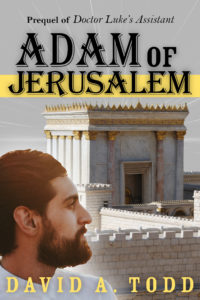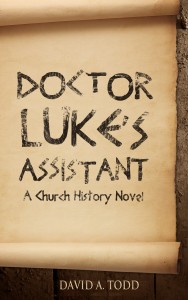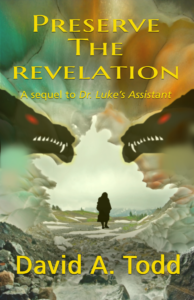
This week, while visiting our daughter’s family in Big Spring, Texas, I was able to carve out time to write quite a bit on The Teachings. As I’ve said before, this is the fourth novel I’ve written in my church history series but it’s the third in chronological order. It fits between Doctor Luke’s Assistant and Preserve The Revelation.
This continues with the intent of the series; that is, that how we got our Christian documents is an interesting study and is worthy of thinking about. Knowing the documents is also a good thing. So far in the series I’ve looked at: the Gospel of Luke, the Gospel of John, the Revelation, and the precursor source for the gospels, the so-called Q document. This new book is about creating The Didache.

The Didache was a sort of manual for the church. It covered how to be baptized—what the baptismal candidate should do and what the church should do. It covered other matters of church government as well as having rules for Christian living. As these blog posts go on, I’ll say more about the contents of The Didache.
The short book disappeared for centuries. The church knew about it from the writing of historians in the 4th and 5th Centuries A.D., but the book itself had not been copied sufficiently to find copies being used by the church. It was only in the 19th Century in Istanbul that a copy was found, in a library, on a scroll created in the 11th Century.
Another premise of the series is that, in addition to the main authors of biblical and post-biblical Christian writings, unknown assistants must have worked on these books. The assistant names himself in the book of Romans, but otherwise these people are anonymous. In this series, the workers are from one family. They are literate, trained to work with documents.

The patriarch of the family is Adam ben Zechariah, who starts out wanting to be a scribe in the high priest’s office. His big assignment is to research the life of Jesus. It moves on to his son, Augustus ben Adam, who studies in Roman schools in Judea to be an amanuensis—a secretary He assist’s Luke in researching and writing his gospel. Eventually we have his younger son, Daniel ben Augustus, who, in the fourth book helps his father assist the elderly apostle John recording his gospel and his visions, and has more adventures than any bookworm would want.
The third leg of these novels is what is going on in history, of the church and of the world. Rome is the occupying power in what we now call the Holy Land. During the time of Christ they rule directly in Judea and through surrogates in Galilee. From 30 A.D. to 66 A.D. factions of the Jewish nation became more and more disenchanted with Roman rule until full rebellion broke out. The Jews were crushed my the Roman military and remained under subjection to Rome until that empire fell.
In the church, growth produced growing pains. The only written scriptures they had were the Jewish scriptures. The words of Jesus were written on the hearths of those who had seen Him and studied under Him. But all the new Christians through the decades needed other documents to guide them. They needed doctrine and practices. What did it mean to put aside pagan practices and live as a Christian, believing in the one true and living God as revealed in His Son Jesus? Until orthodoxy was established the church went through a period of growth pains.
So these are the three pillars upon which the series of books is built. In my next post I’ll speak specifically about what’s going on in The Teachings.